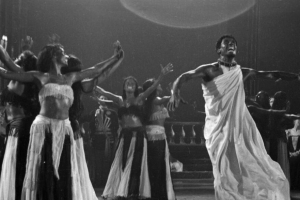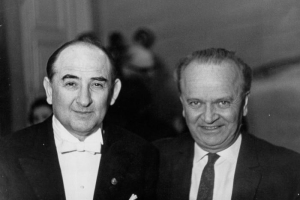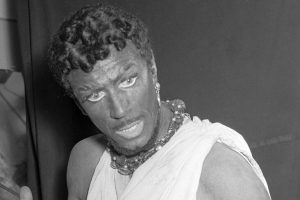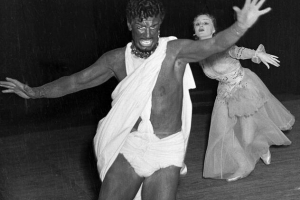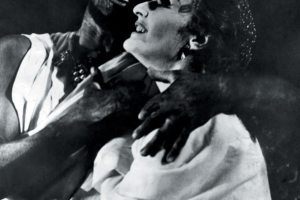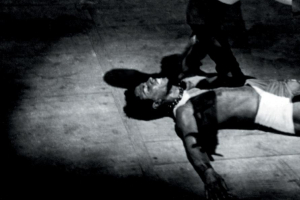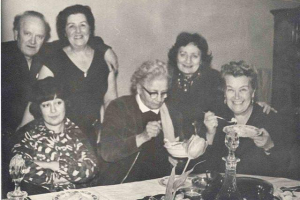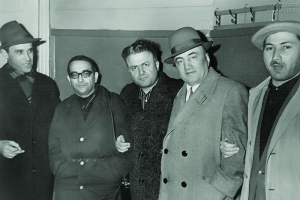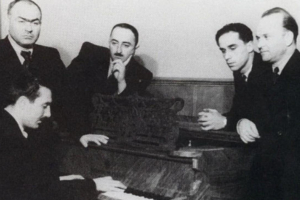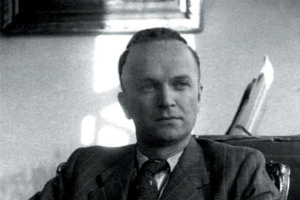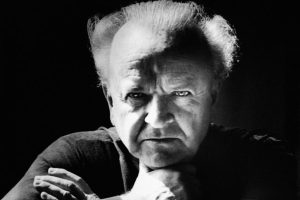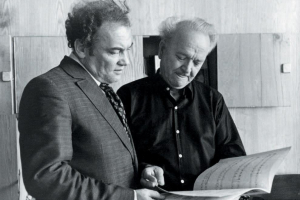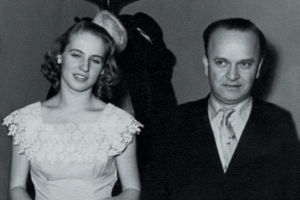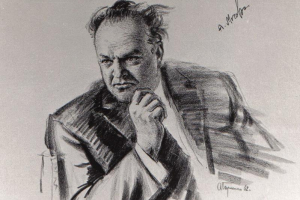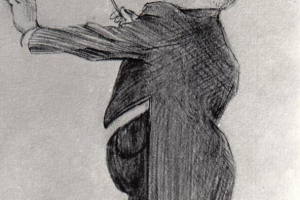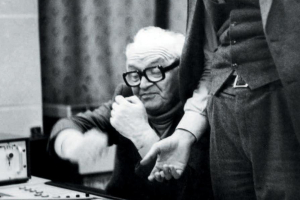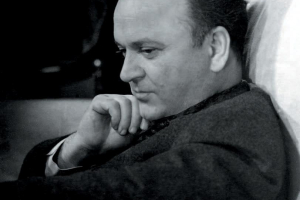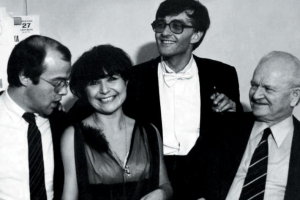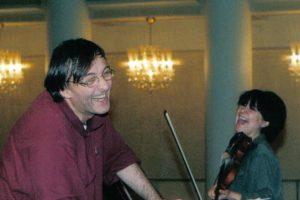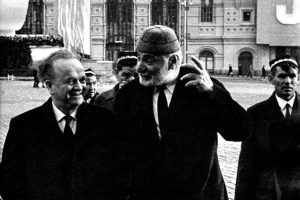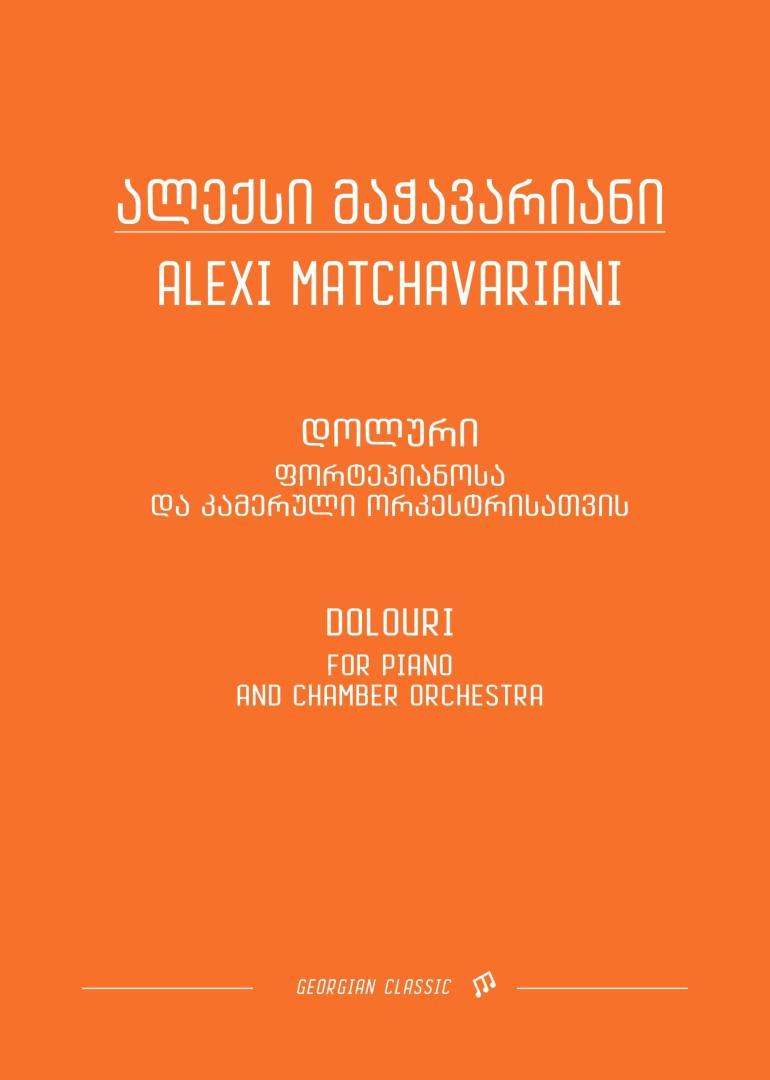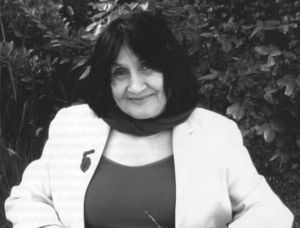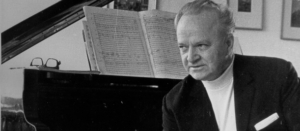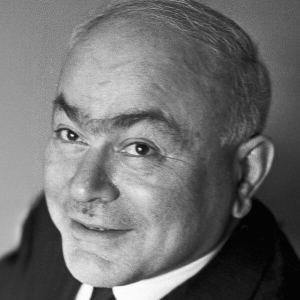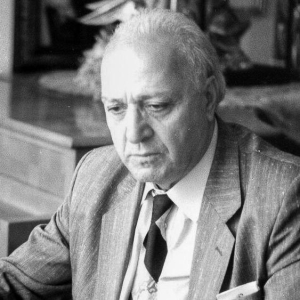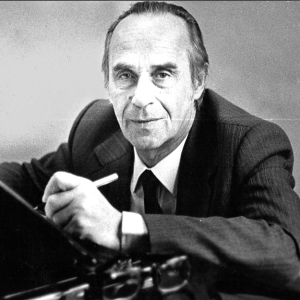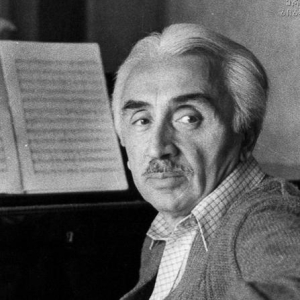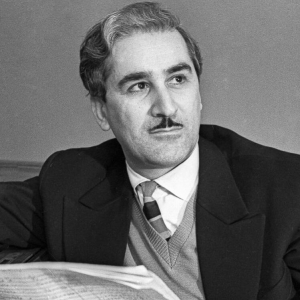Alexi
Matchavariani
Alexi Matchavariani
(1913 – 1995)
Alexi Matchavariani – outstanding Georgian composer, public figure, writer and poet – People’s Artist of the Soviet Union, laureate of the State and Shota Rustaveli Prizes of the USSR, professor of the Tbilisi State Conservatory named after Vano Sarajishvili, member of the Union of Composers of Georgia and the USSR…
Alexsi Matchavariani is one of the prominent representatives of Georgian professional music. With his diverse musical heritage, he has enriched the treasury of national music. A. Matchavariani, as a musician of strong creative individuality and great erudition, is known and appreciated not only in our country, but also abroad.
Date of birth – September 23, 1913
Place of birth – Gori, Georgia;
Date of death – December 31, 1995
Place of birth – Tbilisi, Georgia
He is buried in Didube Pantheon of Writers and Public Figures – Tbilisi
BIOGRAPHICAL DATA
1936 – Graduated from Tbilisi State Conservatory named after Vano Sarajishvili;
1934 –1939 – Director of the musical department of V. Abashidze Tbilisi State Theater of Music and Drama;
Since 1939 – V. Sarajishvili Tbilisi State Conservatory music theory teacher;
1963 – Professor at Tbilisi State Conservatory named after V. Sarajishvili – in the direction of composition;
FAMILY
Spouse – Ketevan Pachkoria–Matchavariani
Son – Vakhtang Matchavariani – composer, conductor, pianist
AWARDS AND RECOGNITION
1951 – USSR State Prize
for a violin concerto
1971 – Shota Rustaveli State Prize
“5 monologues” for the vocal–symphonic cycle
1974 – Grand Gold Medal of the Breindenze Art Gallery
for the ballet “Othello”
Knight of the Order of Cyril and Methodius (Bulgaria)
for the ballet “The Knight in the Panther’s Skin”
1950 – Honored Worker of Georgian Art
1958 – People’s Artist of the USSR
1963 – Order of Honor
1966 – Order of Lenin
1973 – Order of the Red Banner of Labor
1995 – Knight of the Order of Honor
Supreme Soviet of the VI–VII convocations of the Soviet Union, deputy
Union of Composers of the Soviet Union, Secretary (1962–1972)
Union of Composers of Georgia, Chairman (1962–1968)
Member of the Board of the Ministry of Culture of Georgia
Member of the Artistic Council of Ballet Art of the Ministry of Culture of the USSR
Member of the Board of the Union of Composers of the USSR
Secretary of the Board of the Union of Composers of the USSR
Member of the organizing committee of the P. Tchaikovsky Competition I, II, III
Member of the jury of the Shota Rustaveli Prize and chairman of the music department;
Member of the board of the Opera and Ballet Theater named after Z. Paliashvili
Member of the Artistic Council of the Philharmonic
Sh. Member of the Artistic Council of the Rustaveli State Academic Theater
Member of the Art Council of the “Georgian Film” film studio
Artistic Director of the State Symphony Orchestra of Georgia
Secretary of the Union of Composers of Georgia
Chairman of the Union of Composers of Georgia
Deputy of the Supreme Council of the USSR of two invitations
Alexi Matchavariani
(1913 – 1995)
SELECTED WORKS
MUSIC FOR THE THEATER
1945 – “Mother And Son” – Opera in 2 Acts – (libretto – A. Machavariani)
1979 – “Hamlet” – Opera in 2 Acts and 7 Scenes – (libretto – G. Meliva, A. Machavariani)
1991 – “Medea” – Opera in 2 Acts – (libretto – V. Machavariani)
1957 – “Othello” – Ballet in 4 Acts – (libretto – V. Chabukiani)
1973 – “The Panther” – Ballet in 2 Acts – (libretto – I. Grigorovich)
1989 – “The Taming of the Scoundrel” – Ballet in 2 Acts – (libretto – D. Bryantsev, A. Machavariani)
1992 – “Firosman” – Ballet in 2 Acts – (libretto – A. Machavariani)
1979 – “Baghlinjo” – Musical Comedy in 3 Acts – (libretto – T. Abashidze, G. Charkviani)
ORCHESTRAL MUSIC
1947 – Symphony N 1
1972 – Symphony N 2
1983 – Symphony N 3
1983 – Symphony N 4 – “Youth”
1986 – Symphony N 5 – “Ushba”
1987 – Symphony N 6 – “Prometheus – Amirani”
1989 – Symphony N 7 – “Gelati” – for Choir, Orchestra and Solo Mezzo Soprano
1936 – “Elegy” – Symphonic Picture
1939 – “Mumli Mukhasa” – Symphonic Poem
1950 – “Celebratory Overture” – for Symphonic Orchestra
1967 – “Georgian Solemn Overture” – for Symphonic Orchestra
1988 – Symphonic Suite Based On The Opera “Hamlet”.
1944 – Concerto for Piano and Symphonic Orchestra
1949 – Concerto for Violin and Symphonic Orchestra
1987 – Concerto for Cello and String Orchestra
1936 – Scherzo for Piano and Orchestra
1939 – “Lekuri” – for Piano and Symphonic Orchestra
CHAMBER-INSTRUMENTAL MUSIC
1977 – String Quartet N 1
1978 – String quartet N 2
1978 – String Quartet N 3
1984 – String Quartet N 4
1993 – String Quartet N 5
1993 – String Quartet N 6
1947 – “Khorumi” – for Piano
1955 – 4 pieces – for Piano
1958 – “Basalt Lake” – for Piano
1960 – 7 pieces for piano – on The Themes of The Ballet “Othello”
1962 – 33 children’s Pieces for Piano
1963 – 6 Pieces for Piano – on The Themes of The Ballet “Othello”
1968 – 7 Georgian Hymns
1971 – “Improvisation” – for Piano
1972 – Prelude and Fugue – for Piano
1975 – 12 Pieces – for Piano
1976 – 2 Pieces – for Two Pianos – from the Ballet “Othello”
1977 – “Georgian Frescoes” – Cycle of Plays For Piano – To Lexo Toradze
1978 – 4 Fragments from the Ballet “Othello” – for Two Pianos
1978 – “Georgian Dance” – for Piano
1979 – “In praise of Firosman” – for Piano
1979 – “Parisian Sketches” – a Cycle of Plays for Piano
1985 – Piano Sonata N 1
1985 – Piano Sonata N 2
1985 – 6 Piano Pieces
1985 – “Parisian Sketches” – a Cycle of Pieces for Piano
1990 – “Mother Tongue” – 16 Pieces for Piano
1962 – 4 pieces for Violin and Piano
1962 – Variations on a Theme of Desdemona from the Ballet “Othello” – for Violin and Piano
1963 – “Waltz” – for Violin and Piano
1975 – 6 Pieces from the Ballet “Othello” – for Violin and Piano
1979 – “Night” – for Violin and Piano from the Ballet “Othello”
1982 – “Waltz” – for Violin and Piano
1985 – 6 Pieces for Violin and Piano
1987 – 2 Pieces for Solo Violin – “Lazuri”, “Meshkhuri”
1987 – 6 Pieces for Violin and Piano
1989 – Sonata for Violin and Piano
1991 – Theme with Variations for Violin and Piano
1992 – 8 Pieces for Violin and Piano
1992 – 3 Pieces for Violin and Piano – “Turkish Cafe”, “French Ballerina Dance”, “Georgian Dance”
1992 – Lazuri Fresco and Oriental Fresco – for Solo Violin
1975 – 4 Pieces – for Cello with Piano Accompaniment – from the Ballet “Othello”
VOCAL-INSTRUMENTAL MUSIC
1948 – “On the death of a Hero” – Symphonic Poem for Choir and Orchestra
1955 – “My Motherland Day” – Oratorio for Soloists, Chorus and Orchestra
1964 – Five Monologues for Baritone and Symphony Orchestra
1984 – “Mother Tongue” – for Chamber Orchestra and Children’s Choir
1995 – Songs for Children’s Choir and Chamber Orchestra
VOCAL MUSIC
1946 – “Arsena” – ballad-poem –for Soloists, Choir and a Cappella
1974 – “Dolluri”
1977 – “Poem of Gori”
1977 – “You Are Here”
1994 – Lazuri Fresco for Sound And Piano
1952 – “Orovela” – Choral Song
1953 – “Arsena” – Choral Song
1958 – Choral Songs
1958 – “Doluri” – Choral Song
1965 – Five Monologues on Poems By Vazha Pshavela – for Baritone and Piano
1968 – 4 Ballads for Bass and Piano
1973 – 22 Songs
1974 – 15 Choral Songs
1975 – Three Choral Songs
1977 – 14 Vocal Compositions
1978 – a Choral Poem for a Women’s Choir
1979 – 16 Choral Songs
1980 – 11 Songs for Piano and Piano
1980 – 11 Songs and Ballads N. Baratashvili’s Poems
1980 – 6 Songs – text – G. Tabidze and A.Machavariani’s poems
1985 – 16 Choral Songs
1986 – Romance “Earring” – for Soprano and Piano
1987 – “We Are Peace” – for Mixed Choir
FILM AND THEATER MUSIC
FILMOGRAPHY
1940 – “Daughter from the other side” – director – Leo Esakia
1941 – “Kajana” – director – Konstantine Pipinashvili
1942 – “Bridge” – director – Konstantine Pipinashvili, Shota Managadze
1945 – “Golden Path” – director – Konstantine Pipinashvili
1947 – “Akaki’s Cradle” – director – Konstantine Pipinashvili
1956 – “The Secret of Two Oceans” – director – Konstantine Pipinashvili
1958 – “Mayakovsky Began Like This…” – director – Konstantine Pipinashvili
1959 – “Where Is Your Happiness, Mzia?” – director – Konstantine Pipinashvili
1963 – “General and Chickens” – director – Mikheil Chiaureli
FILM-BALLET
1960 – “Othello” – director – Vakhtang Chabukiani
DOCUMENTARY
2005 – “Mother of God” – director – Merab Gagua
Alexi Matchavariani
(1913 – 1995)
Alexi Matchavariani’s songs started a new chapter in Georgian professional music, filled with imagination, poetry, and beauty. The composer’s inventive samples were responsible for one of the earliest international recognitions of Georgian music.
Even now, the works continue to captivate and excite performers, listeners, and researchers from various countries and nationalities.
Aleks Matchavariani ‘s creativeness covers several genres. During his lengthy life, the composer touched practically all kinds of musical art and left a rich musical heritage that has yet to be fully explored.
The piano piece Khorum (1939) was one of Matchavariani’s first compositions in which his unique elements were clearly displayed. This creation, which originates from the Adjara folk dance pattern in western Georgia, serves as a foundation for Matchavariani’s subsequent, significant compositions, as the national dance rhythm and intonation pattern becomes one of the most important components of Matchavariani’s compositional content.
The piano piece Khorumi (1939), which originated from the Adjara folk dance style of western Georgia, was one of Matchavariani’s first compositions in which his own elements were clearly displayed. It should be mentioned that Khorumi served as a kind of foundation for Matchavariani’s later notable compositions, where the national dance, rhythmic, and intonation pattern is already regarded as one of the composer’s signature aspects.
Chronologically, the 1940s are particularly significant in Matchavariani’s artistic life. This is the period connected with the composer’s first major success, and at this period of time, his main creative principles developed. A significant amount of the created works is motivated by tragic happening – the Patriotic War’s motive: Heroic patriotic Opera “Mother and Son” (1944), Symphonic poem “On the Death of a Hero” (1948), and so on.
Among the compositions composed in the 1940s is the Piano Concerto (1944). This work is full of the lofty lyricism that Matchavariani is known for.
At the same time as temperament, it is notable in terms of the evolution of the genre of the Georgian piano concerto. It attracted attention due to its national quality folklore connection, as well as the use of intonations and the transfer of dramaturgical aspects typical of folk songs to the concert genre.
A large-scale rhythmic-motoric arrangement from the previously described piano piece “Khorumi” appears in this work as well. The beginning, which arose from the national dance element, is already modified in many ways in the concert and takes on the function of constructing the work’s form. It should be emphasised that the alteration of the rhythmic image of dance thematism, the metric variation of motility, will continue and develop in the works of both Matchavariani and other Georgian composers.
Compositions which created in the end of the 1940s, their presentation became a celebration of national musical creativity. The romances “The colour of the sky” (based on Nikoloz Baratashvili’s poem), “The Face of the Sun” (based on David Guramishvili’s poem), “Don’t worry, mother” (based on Giorgi Leonidze’s poetry) are among them. The romantic-poetic world described by the composer’s magnificent shades of light was completely unveiled in these romances. The usual intonation patch of romances would become the basis of Alexi Matchavariani’s later large-scale masterpieces’ performing lyrical “romantic” beginning.
The Violin Concerto (1949), one of Matchavariani’s brilliant compositions, relates to the aforementioned period. Almost 40 years after its premiere, the legendary violinist Yehudi Menuhin stated, “Matchavariani’s violin concerto is beautiful. It combines emotion, poetry, beauty typical of the Georgian people, and nature, all of which impressed me.” This song has a profound intellectual effect. Aside from its artistic and emotional appeal, the violin concerto is valuable and significant in a variety of ways. This is the earliest instance of a Georgian violin concerto in which the national character is clearly established. This work is also the first among national productions of this genre in which the author use the violin’s extensive technical and virtuoso abilities to convey his creative concept. The work is also remarkable in terms of genre comprehension, as the notion of concert defines the dramatic development. It is worth noting that A. Matchavarian’s violin Concerto was performed by various famous musicians, among them are – two great violinists, D. Oistrakh and L. Isakadze.
The premiere of Matchavariani’s ballet “Othello” (author of the libretto, V. Chabukiani) became a notable event in Georgian cultural life at the end of the 50s. (1957). The ballet’s rarely experienced success was attributed to the staging of Vakhtang Chabukiani, a notable Georgian choreographer and one of the world’s most recognised ballet art reformers, as well as Matchavariani’s music and his performance of the Othello role.
The work’s international success is mostly linked to Vakhtang Chabukian’s 1960 film-ballet Othello. Othello by V. Chabukiani, with its virtuoso dance numbers and artistic transformation is regarded as one of the most stunning presentations of ballet performance art.
`It was an ambitious move on the part of the authors to apply their imagination to a classic sample of world literature, to visualise Shakespeare’s tragedy in the form of a ballet performance, and at the same time, its musical dramaturgical understanding required taking into account previous experience with musical Shakespearean music. With the contrast of the melodic material, the deep symphonic development, and the distinct pictures of the characters, the composer developed an amazing musical interpretation of the dance production.
The evolution of Georgian professional music that began in the 1950s and 1960s had a significant impact on Matchavariani’s compositional style. The enlargement of the rhythmic-intonational structure of the musical language, as well as the acceptance of technological and performing skills characteristic of modern music, are signs of artistic metamorphosis. These characteristics are vividly manifested in the 1960s opera “Hamlet” (1967). Five monologues for baritone and Symphonic Orchestra on the text of Vazha Pshavela – in the Vocal Instrumental piece.
Since the 1970s, there has been an increasing need for conceptual thinking in Matchavariani’s artistic universe. Symphony N2 (1972) is a perfect example of this. The compositions of large and small form developed during this period are full of fascinating discoveries, and the cycles of piano pieces, “Georgian Frescos” (1977) and “Firosman’s Toast of Remembrance” (1978) represent a new word in National Piano Music. (1977).
During the aforementioned period, the composer’s desire for contemplative, generalised, and perhaps philosophical forms expressed itself particularly in the Chamber-Instrumental genre.
In a short period of time, A. Matchavariani composes three quartets in a consecutively. (1978-79). And all three are distinguished by a generalised exposition of the theme, symphonic growth of dramaturgy, intonation, and metro-rhythmic intensity… along with some contrast.
“The Knight in the Panther’s Skin” ballet might be viewed as the culmination of Matchavariani’s creative journey. (1973) The work attracts notice on the one hand for its unique musical staging of Rustaveli’s aesthetic and philosophical world, and on the other – for a type of synthesis of the composer’s long-term searches. Findings from twentieth-century musical art, such as dodecaphonic sequential elements, the old classical key-tonality concept, ancient Georgian hymns, and folk music, coexist in this work.
Motives of the songs in “Vepkhistkaosani” (The Knight in the Panther’s Skin), bring to light another aspect of Matchavarian’s artistic philosophy – the idea of polystylistics. This arrangement takes place in the composer’s later works, serving as the foundation for their interpretation in the postmodern era. Matchavariani’s works from the 1980s and 1990s include elements of the postmodern worldview. One of its manifestations can be noticed in the opera “Medea” (1991). This work is an intriguing example of the coexistence of musical components from several eras, styles, and tendencies.
Matchavariani’s latter works have a continuous and strong attitude to problems of humanity, which is especially evident in his last four symphonies – (N 3 – N 6). The cosmic and, at the same time, current vision of the world draws the listener’s attention in all four works. The desire for a dramatic imagination of events deepens Matchavariani’s musical language, which the composer accomplishes through a variety of expressive ways and a kaleidoscopic interchange of polystylistic elements.
Most significantly Matchavariani’s later works are unified by a persistent sense of national features and their connection to following events of the moment, which determines their continuing importance.
The majority of Alexi Matchavariani’s later works were premiered after his passing away. A number of other pieces are awaiting to be performed.
Alexi Marchavariani’s creations will always be regarded as a symbol of National identity, both in Georgia and beyond.
Musicologist
Tamar Tsulukidze
English Language Translator
Tamar Kharadze





